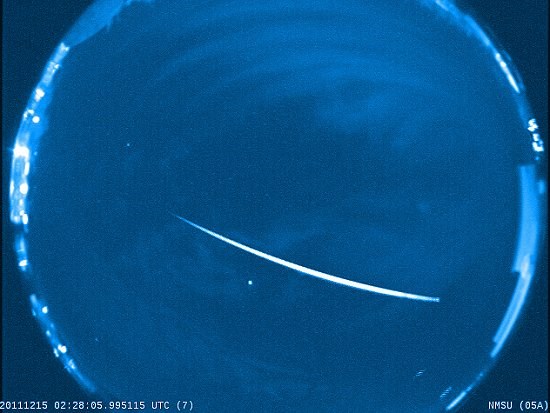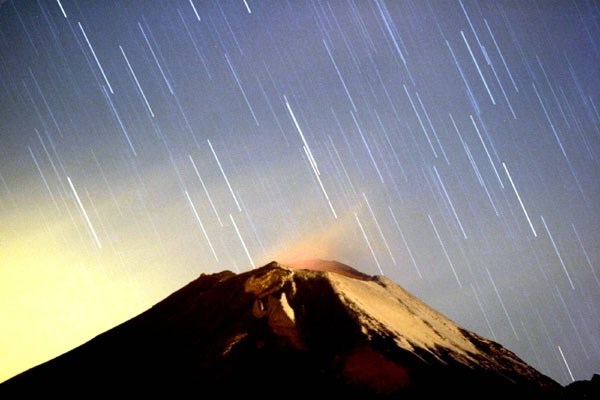
Don't miss the best chance of the year to see "shooting stars" in Vietnam: the Geminid meteor shower reaches its peak this weekend.
Don't miss the best chance of the year to see "shooting stars" in Vietnam: the Geminid meteor shower reaches its peak this weekend.
The best night is expected to be Saturday (Dec.13) night into early Sunday morning.
 |
| Geminids meteor shower over Popocatépetl volcano in Mexico on December 14, 2004. Photo credit: VietnamPlus/independent.co.uk |
The meteors will start out few and far between in early evening but will increase in number as evening deepens into late night, especially in the hours after midnight.
In Vietnam, the largest concentration of these shooting stars can be seen at 1 a.m. Sunday local time, when one may see 50 to 100 meteors an hour, astronomers say.
The shower can be partly obscured by bad weather caused by the tropical storm Hagupit, which may make landfall on the southern coast of Vietnam towards the end of the week, said Dang Tuan Duy, head of Ho Chi Minh City Amateur Astronomy Society.
The shower, whose origins are mysterious,has been intensifying every year, and recent showers have seen 120–160 meteors per hour under optimal conditions.
First observed in 1862, the shower is usually seen in December, and appears to come from a radiant in the constellation Gemini, thus the name.
But the shower is actually caused by asteroid 3200 Phaethon, a mysterious body that is sometimes referred to as a rock comet.
Every December, debris from the object crashes into the Earth’s upper atmosphere at some 130,000 kilometers (80,000 miles) per hour and vaporize as colorful meteors.
 |
| Captured by an all-sky camera, a Geminid fireball brighter than Venus streaks across the sky above New Mexico on Dec. 14, 2011. Before disintegrating in the atmosphere the meteoroid was about 1/2 inch across. Credit: Marshall Space Flight Center, Meteoroid Environments Office, Bill Cooke |
(Source: TNNews)





